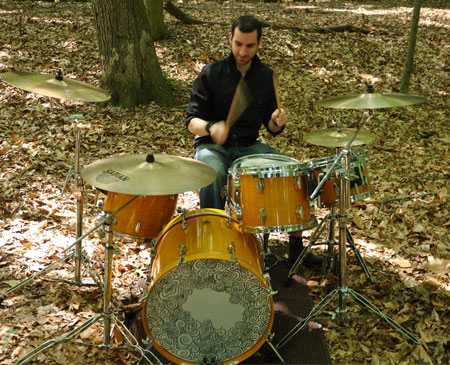If you play music professionally there are times where you are expected to play on your instrument for hours. Whether you are playing at a wedding gig, a casual, on a cruise ship, a full day rehearsal, they all take a toll on your body. The physical demands of the drums makes these gigs even more challenging for drummers.
One of the tools I like to use to combat that wear and tear is the Alexander Technique (AT). The Alexander Technique is a movement technique that teaches people how to efficiently use their bodies by inhibiting unnecessary muscular tension. Sounds pretty easy right? In fact, quite the opposite when you consider that excessive muscular tension in most people is the result of years of inefficient movement and posture habits. Breaking those habits and forming new habits can take a tremendous amount of mental discipline and time.
I started AT lessons in my late twenties mainly due to upper back and shoulder arthritis. My first teacher pointed out that I was holding tension in my face and especially my jaw. She went on to give me some techniques to inhibit the tension in those areas as well as to calm my entire nervous system. One of those techniques is called “active rest” or “constructive rest” which you can find out more at http://alexandertechnique.com/constructiverest.
Active rest is also beneficial before and/or after a strenuous activity (like a gig) and you only need around ten minutes or so to get the benefits. It’s a low maintenance tool for sure and doing it everyday will increase it’s benefit.
Delving deeper into the art of the Alexander Technique requires working with a certified teacher individually or within a group. Although many people notice diminished pain immediately after their first lesson, it usually takes around ten lessons for your average person to become aware of all their body movement habits and to start inhibiting some of them. If you are serious about getting started I recommend finding a certified teacher. I used this directory http://www.alexandertechnique.com/teacher to find my teacher in Orange County – Doug Shenefield
One of the drum set playing challenges Doug immediately noticed is that since drummers are operating the foot pedals, we can’t properly ground our feet. Another challenge is being able to move to and from different parts of the drum set without stiffening up or delivering unnecessary stress to certain muscle groups. Doug noticed that I wasn’t pivoting when I moved my right arm from the ride cymbal across my body to the hi-hat, which resulted in unwarranted stress on my right shoulder. To help keep freedom in the body, pivoting towards the particular drum or cymbal you are playing is important–seems obvious but sometimes we forget what’s natural for our bodies when focused on our instrument.
Traditional grip was also seen as a unique drumming movement challenge. When I played with traditional grip, Doug noticed I was leaning my upper body slightly toward the left and putting more weight on my left sitz (sitting) bone. This is pretty common for drummers that play traditional grip. What I learned from Doug is that this leaning posture is not needed at all times to play traditionally.
Doug was really digging the Moeller technique movements! Although Doug knew nothing about drum technique, he was able to keen in on some of those movements. He described them as “sinuous” which I think is a great adjective to describe how the Moeller Technique should look and feel. Once Doug pointed that out I seemed to loosen up more and have a bit more fun! The video above captures that well!
If you’re suffering from body pain, or just run down from the wear and tear of playing music professionally, then the Alexander technique should be a good investment for you.

